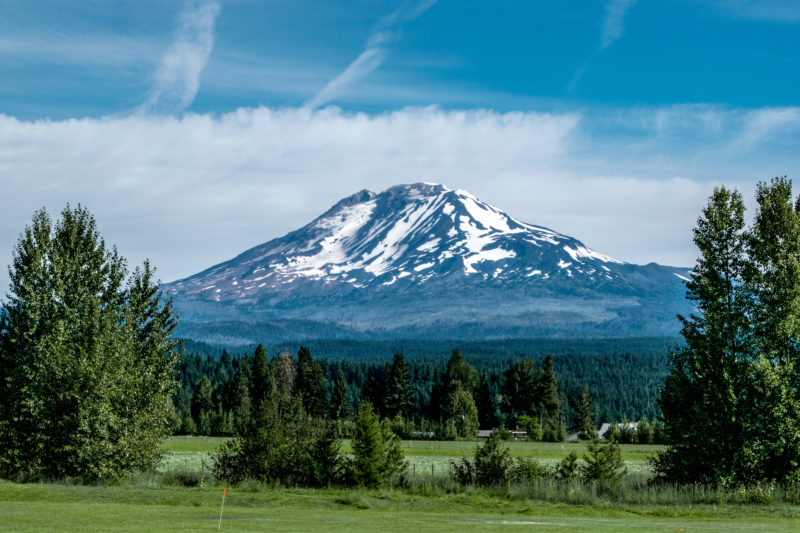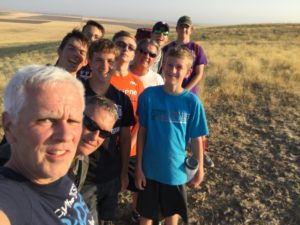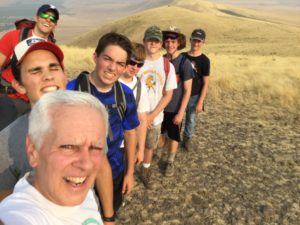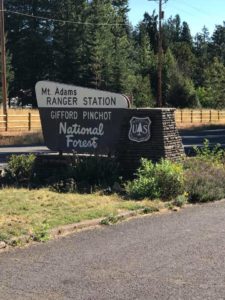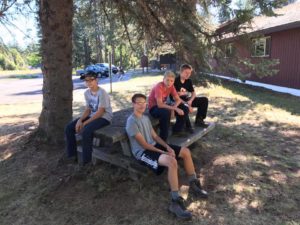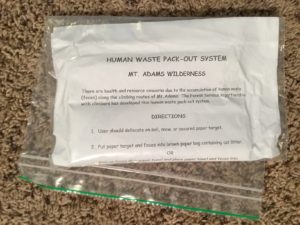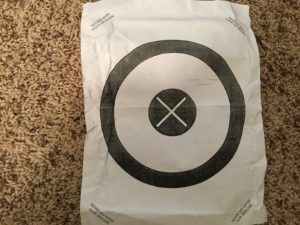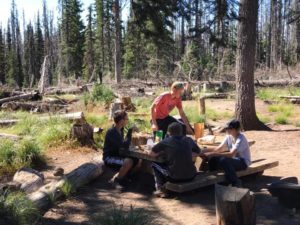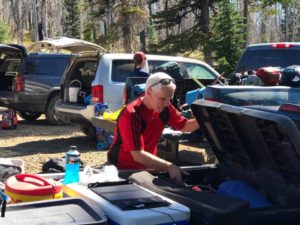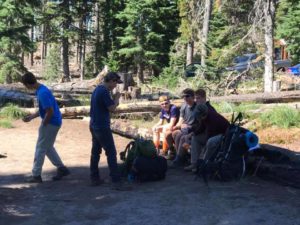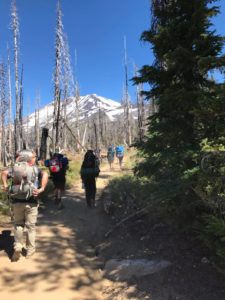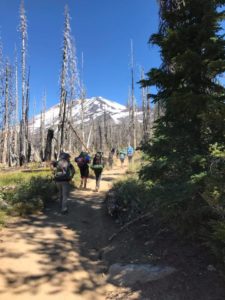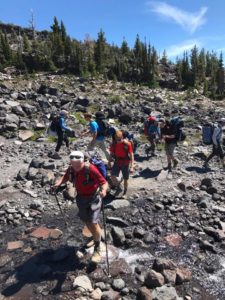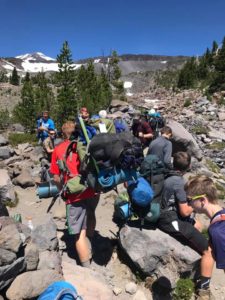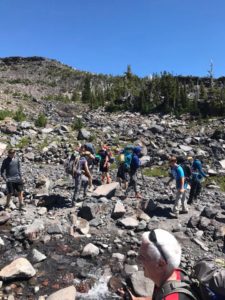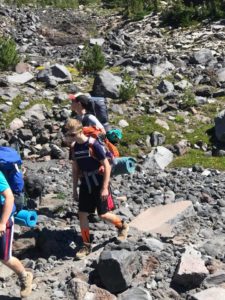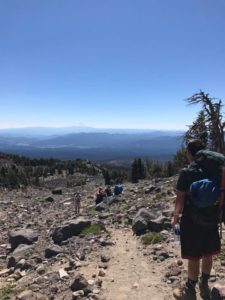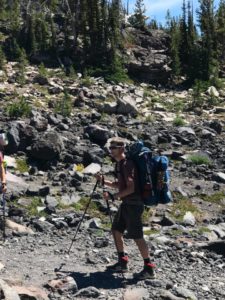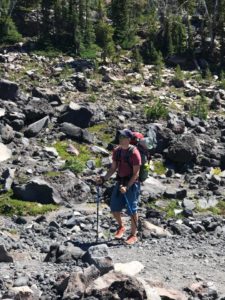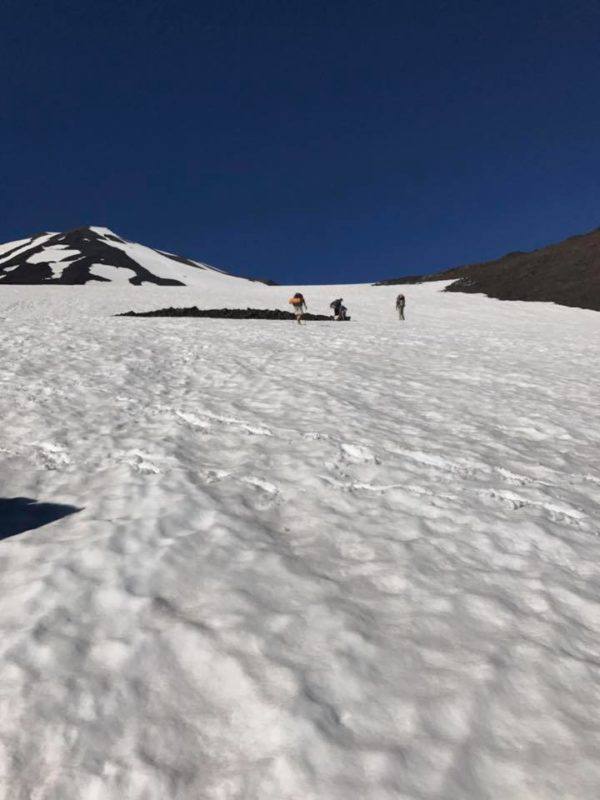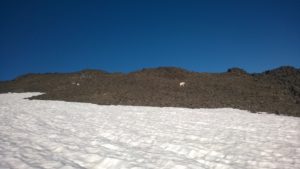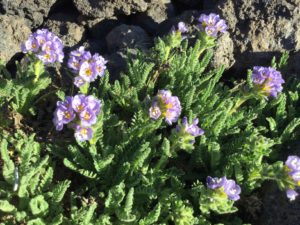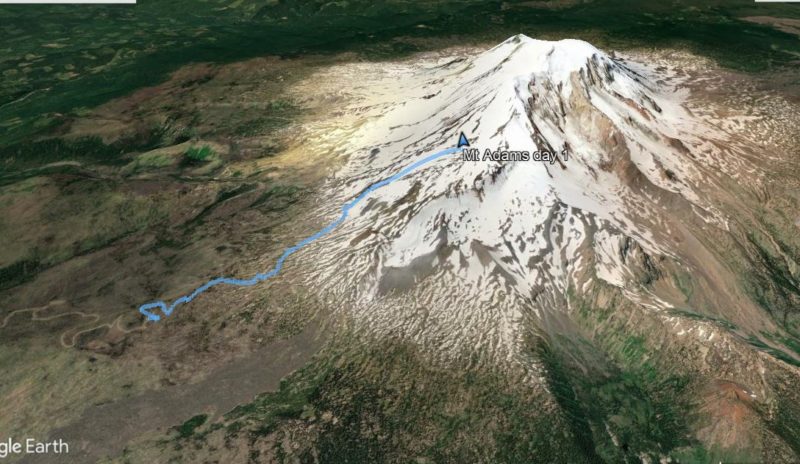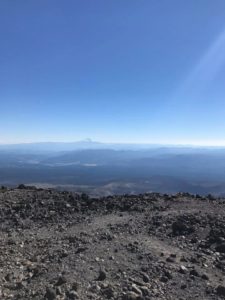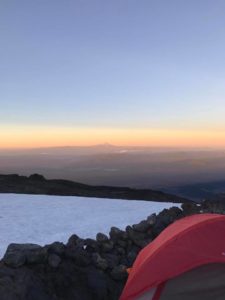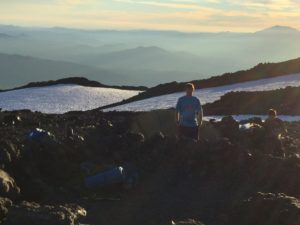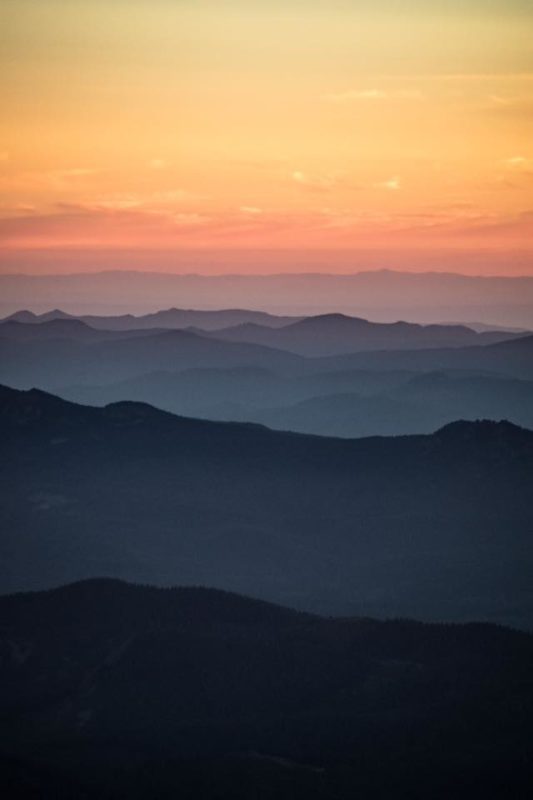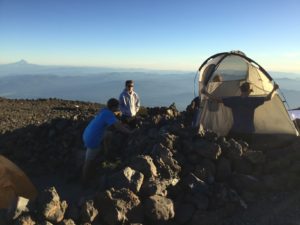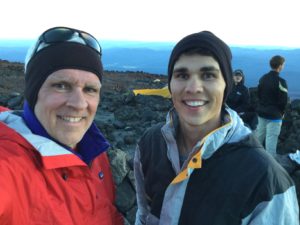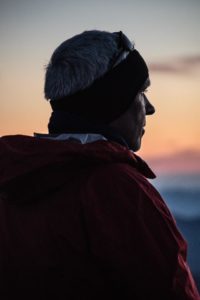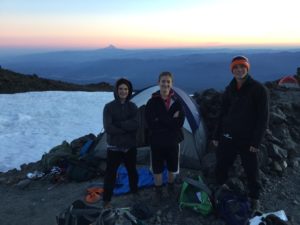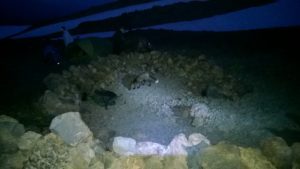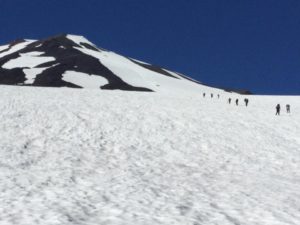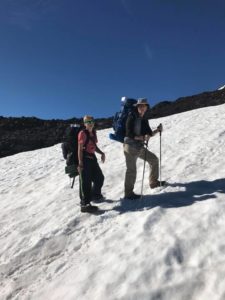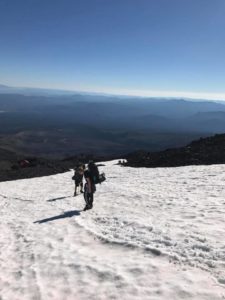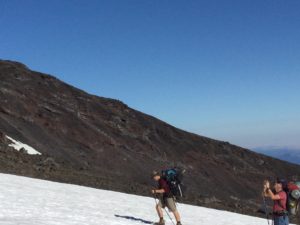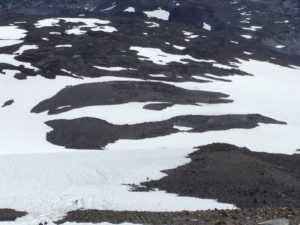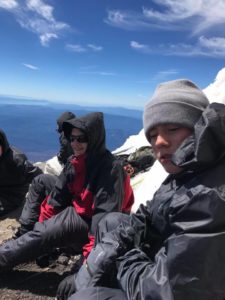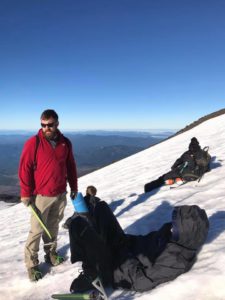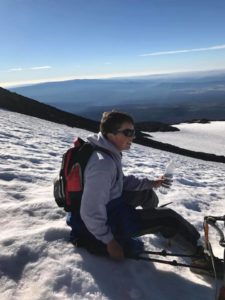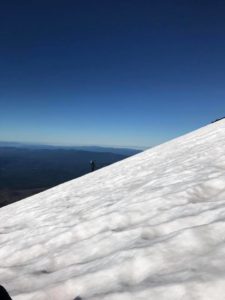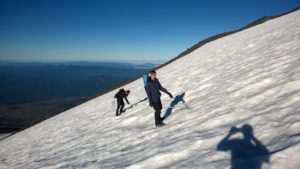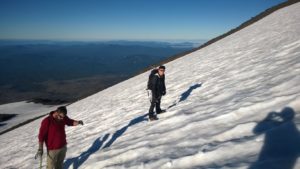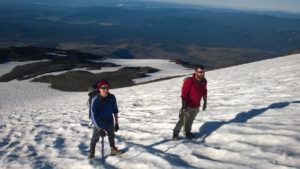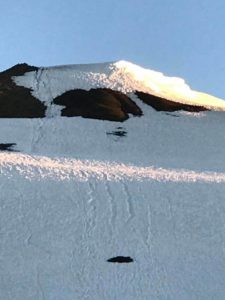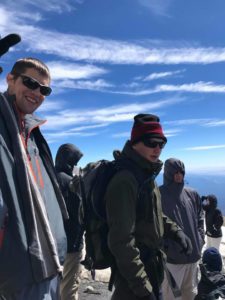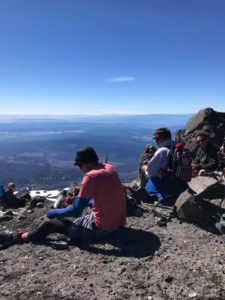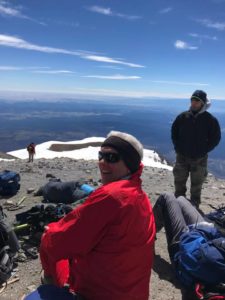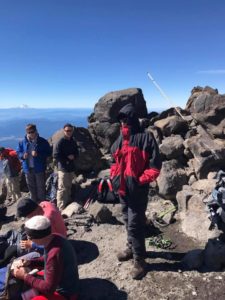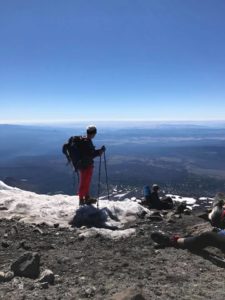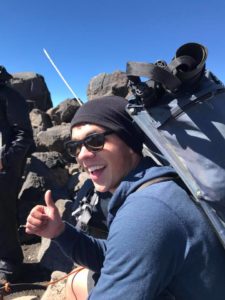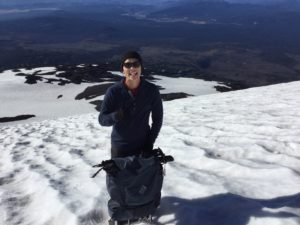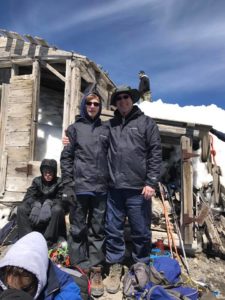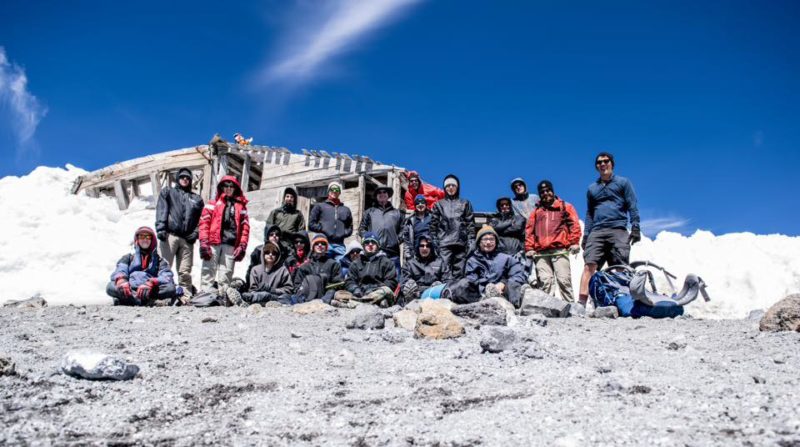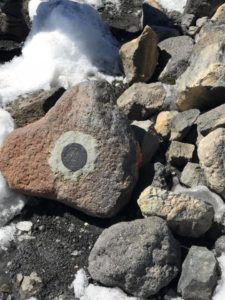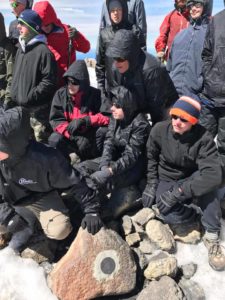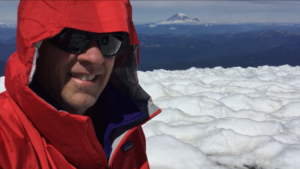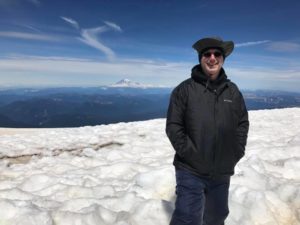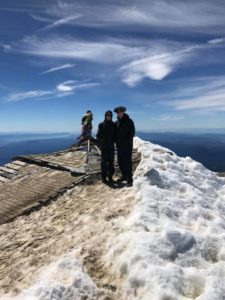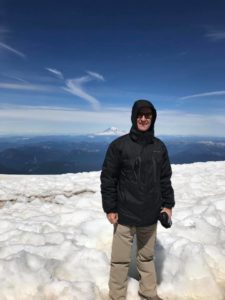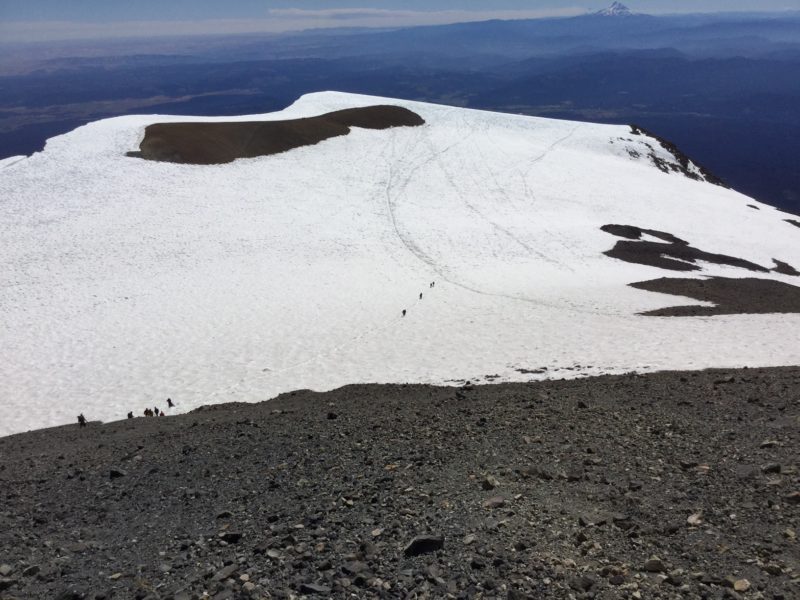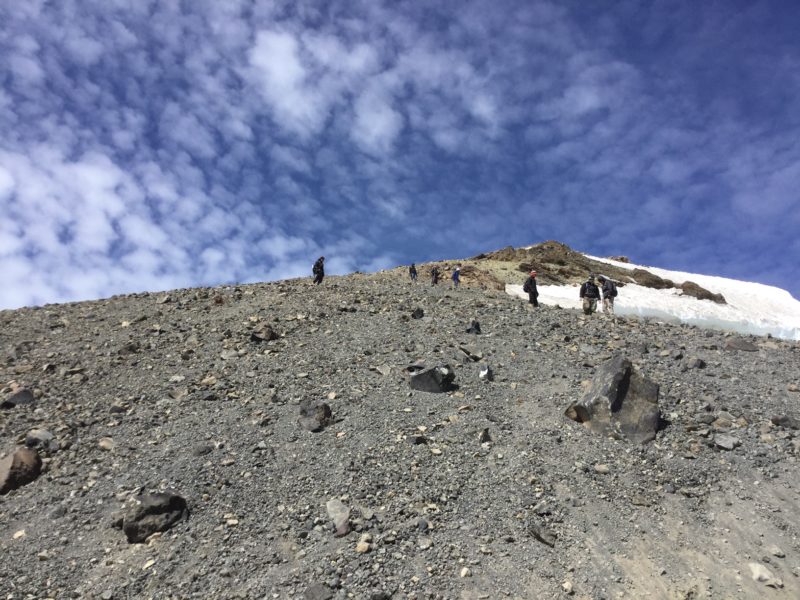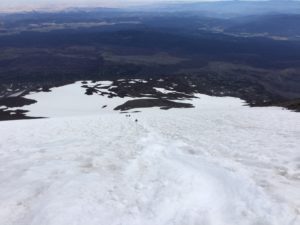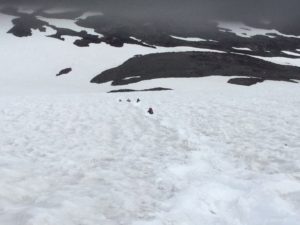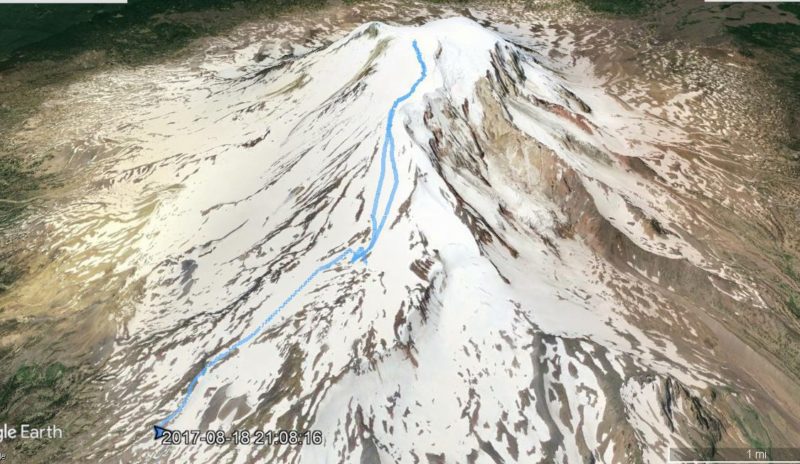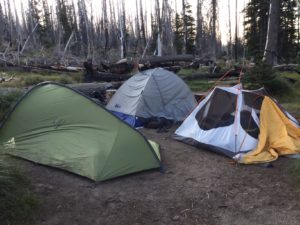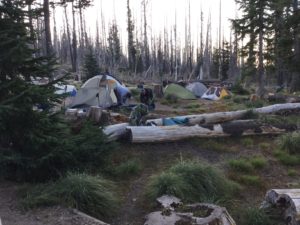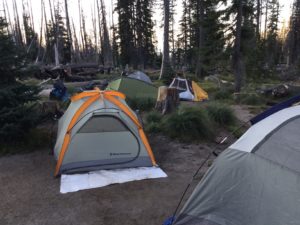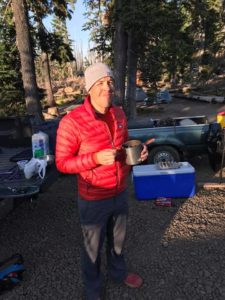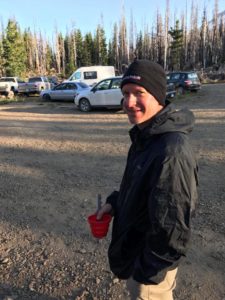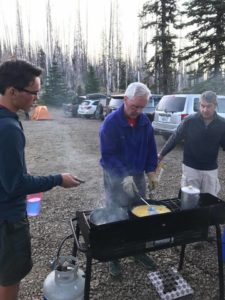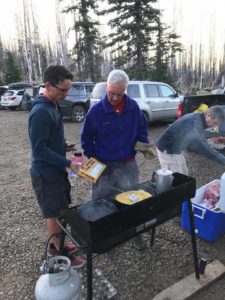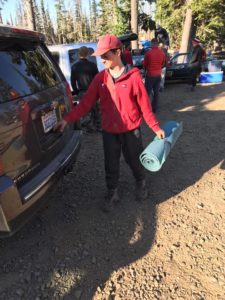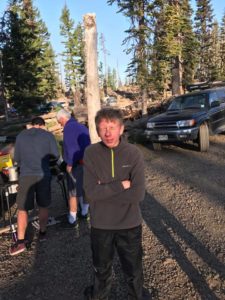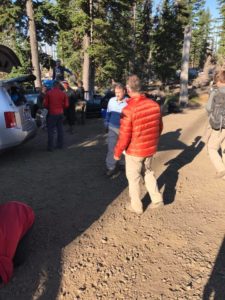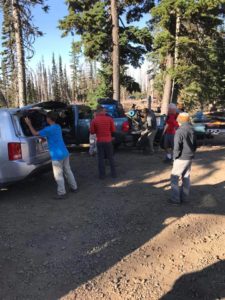This page is dedicated to those who want to know more about climbing Mount Adams in the Cascade mountain range of Washington State.
Facts about Mt. Adams:
Height: 12,277 feet, 3742 meters
Mount Adams is the largest active volcano in Washington State, geologists believe it last erupted about 3,800 years ago
Native Americans know Mt. Adams as Pahto or Klickitat
Mt. Adams is the second tallest mountain in Washington State (behind Mt. Rainier)
Click on this link for the menu for this trip
Click on this link for the packing list for this trip
Click on this link for the photo library for this trip
This adventure occurred on August 17-19, 2017. The weather was beautiful with sunshine and moderate temperatures. The group was from the Paradise Ward of the Church of Jesus Christ of Latter-day Saints. There were 13 youth, ages 14 to 18 and 8 adults. The group is also from troop/post 290 of the Boy Scouts of America.
We had spent months in preparation for this High Adventure with practice hikes up our local hills like Candy Mountain, Badger Mountain, and the main training hill; McBee Hill.
We spent a lot of time on McBee because it is fairly steep and most closely resembles the steepness we would face on Mount Adams. We also put together a packing list which was distributed early to allow everyone to gather equipment. You can click on this link for a copy of our camping list (it is not an exhaustive list but we wanted to keep weight reasonable).
We gathered at our meeting spot at about 5:45 and handed out food (oatmeal, bagels, Mountain House meals, etc. you can click on this link to see our menu). We departed by car from the Tri-Cities (Richland, Pasco, Kennewick, West Richland) at about 6:30 a.m. and drove to Trout Lake (about 3 hours).
We stopped at the ranger station where we procured our hiking passes and Human Waste Pack-out System (we called them “blue bags”)
We were pleasantly surprised when we found the cost was $15 per hiker, aged 16 and older. Since many of the youth in our group were under age 16, this saved some money on our trip budget. The ranger was very helpful, she told us there were only about 67 people on the mountain at that point which is a fairly low number. One important note is water supply. You should make sure your water bottles are filled before you leave the ranger station. This is the last stop with water before you hit the trail for the climb. There is no running water at Cold Springs Campground (the trailhead).
After the ranger station, we went back to the main road and turned to the right, following the signs to the “South Climb”. A short way up the road is a sharp left onto a single lane paved road which leads to Cold Springs Campground. It is about 11 miles to the campground from this turnoff. The road gets pretty rough, it turns to dirt/gravel with heavy washboards and large bumps. Make sure your vehicle has high clearance. 4WD is not mandatory but it would be helpful (I drove up in my little 2WD Toyota pickup). This road is seasonal so make sure you check with the ranger station if you’re hiking early or late in the year.
When we got to Cold Springs Campground, it was largely empty. This is because we got there on a Thursday. If you plan on doing this trip, I would recommend trying to do it on a weekday as it can be a madhouse on the weekends. Just by way of information, there at 3 enclosed pit toilets (no running water) at the campground that are quite clean.
Everyone unloaded and gathered around the camp site. We decided to divide the group in two because the forest service has a group size limit of 12. The first group had some of the younger youth along with a few seasoned youth for support and encouragement. We also divided the adults between the two groups with, at least one Mt. Adams veteran in each group to help keep us on track. We also had Garmin Rino 650 GPS walkie-talkies along which helped keep us in communication.
The first group strapped on their backpacks and headed to the trail at about 11:30 a.m. Group 2 hit the trail at about 12:15 p.m.
As this was a large group and try as we may to reinforce the need for physical fitness for all participants, some were better physically prepared than others and we had a wide range across the 21 participants. With that variety, the speed of hiking was highly variable. The adult leaders and the more seasoned youth did a great job encouraging and cheering the less experienced people along the journey. The start of the trail is pretty flat terrain, fairly wide and dusty. The incline is gradual but it is continually climbing. A couple of miles into the journey, we came to the Morrison Creek Drainage and crossed Morrison Creek.
This was a good place to take another break and splash some cool water on our faces and heads. This is also a great place to refill on water with filter pumps or other purifying methods. From Morrison Creek Drainage, the hiking gets tougher. Keep in mind that all along the trail, we saw beautiful vistas of Mt. Adams. Soon, Mt. St. Helens and Mt. Hood would jump into view.
The climb up the Morrison Creek Drainage is across everything from loose gravel to large boulders and unstable rocks. The trail can be hard to follow but there are some large poles marking the way.
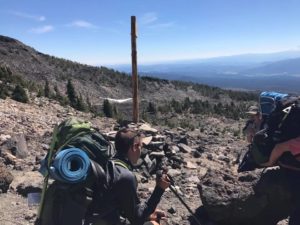
Josh and Alden on break during climb of Morrison Creek drainage on Mt. Adams at one of the marking poles
As we hiked up the Morrison Creek Drainage, we crossed a snow field and clammored up the side of the valley to the ridge along the edge. Here, we continued up the ridge until we passed a few rock shelter rings where campers can be protected from the wind. We continued a slow pace up the steep rocks. As we followed the web of trails but knew we needed to keep going up, we stayed on track. The two separate groups got closer together and the stops for rest were frequent. Eventually, we reached the bottom of the lower tip of Crescent Glacier. Group one continued up the short rock field to another rock ring camp area, group two strapped on their crampons at the tip of Crescent Glacier and the experience which was new for most of this group began; mountain crampon hiking!
We all headed up Crescent Glacier, starting around 4:30 p.m. At this point, the elevation was around 8,000 feet. A small rock outcropping in the middle of the glacier served as a stopping point for some of the group who had loose or misadjusted or malfunctioning crampons. We spent a few minutes there and then continued up the mountain.
The sun was beating down on us and the strenuous nature of the hike was warming most people up who had shed coats, layers, and hats. This was a challenging part of the climb as the crampons crunched in the snow. Some people brought trekking poles and they were glad about it because the arms could be used to supplement the tired legs.
As we hiked up, we passed other groups going down. One friendly gentleman told us the left side of Lunch Counter (base camp where we would spend the night) was already full but the right side was wide open with camp spots. We continued up the snow field and headed for the right side of Lunch Counter. As we climbed, many of our bodies were ready to stop and find a place to spend the night. A couple of mountain goats were hanging out on the rocks munching on the ground cover as we approached the Lunch Counter area.
We pushed upward to get in a good position for starting in the morning. We ended on the higher side of the right side of Lunch Counter and scouted out the 3-4 foot high rock rings for our shelters. The first people to the camp site arrived around 5:55 p.m. By the GPS record, the actual moving time was just over 3 hours. The stopped time for water, rest breaks, and equipment adjustment was about 2.5 hours so about 5 hours, 45 minutes from Cold Springs Campground to Lunch Counter.
Day 1 Stats:
Distance 5.2 miles (Cold Springs Campground to Lunch Counter)
Moving time: 3 hours 19 minutes
Total time: 5 hours 50 minutes
Starting elevation: 6263 feet (Cold Springs Campground)
Ending elevation: 9281 feet (Lunch Counter base camp)
Ascent: 3015 feet
The first arrivers scouted out a water source about 100 yards away, glacier runoff at the tip of a local snowfield. The usual bounding energy you see around a scout camp was somewhat subdued as the youth slowly got their tents unpacked and began setting up.
It was clear that everyone worked hard this first day of climbing Mount Adams. They were rewarded with amazing vistas!
Views of the Cascade Range with Mt. St. Helens to the southwest, Mount Hood to the south and other mountains beyond Hood. On our hike, it was very clear with some residual smoke from northwest wildfires settling in the valleys far below us.
As the sun set, long shadows providing awe-inspiring colors. Lights from Trout Lake and White Salmon came on in the valleys below.
We got our shelters assembled and sleeping bags unrolled, they seemed to be longing for us to get inside and take a rest!
Our menu only required boiling water so we fired up out Jet Boils and other stoves and everyone got their Mountain House meals. We chose the 2-3 serving Mountain House options because everyone was already burning tons of calories on this first day with more to come on day 2.
As the sun went down, the temperatures dropped. We don’t have an official temperature but it seemed to be in the 40’s F. Everyone got their warm clothes on and donned their hats and gloves. It was a stark contrast to the back home temperatures over 100 degrees F. As the sun set, our group gathered around for an evening spiritual devotional. We sang a couple of hymns and had a spiritual message. We also gave words of congratulations and encouragement for the accomplishment these young men had already endured by making it to Lunch Counter. Then, we got in bed and went quickly to sleep. The sky was clear and the stars were spectacular! Even with the clear sky, the overnight temperature didn’t dip too low. With the evening came some gusty wind that blew the tents around. I used earplugs but still heart the rustling of the breeze. I know I slept some but it was off and on as the wind blew.
Our alarms went off at 5 a.m. and we got up and started rousting the youth. We boiled water for breakfast and decided which items would be left behind during the day’s assault on Mt. Adams. As we were getting breakfast in the dark, a fox lurked close by, scavenging for treats dropped by humans.
Since we weren’t going to camp up the mountain, we left things like tents, sleeping bags, and other unneeded items at Lunch Counter to be retrieved on our way back down. This helped alot as the lighter packs gave us better balance and less overall weight. We made sure to keep important items with us like all our clothes, first aid kits, emergency blankets, and food. We strapped on our crampons and headed up Suksdorf Ridge.
We followed the snow as there were some areas which had exposed rock and we didn’t want to dull or damage our crampons and hiking through the rock seemed to be more difficult than crampons on snow.
The crampons gripped fairly well in the compacted snow.
Many hikers start early in the morning to make sure the snow isn’t too soft or slushy from the sunshine.
The climb was slow as the Suksdorf Ridge and Mazama Glacier are fairly steep. The snowpack wasn’t too rough or dimpled so footing was pretty secure. We quickly gained in elevation and the view back down to our camp at Lunch Counter was great.
The steep climb required rest stops along the way for Snickers bars, water, and other nutrition.
The youth kept taking step after step, a little bit at a time, heading for Piker’s Peak (the false summit).
After a few steps, we would look up and see the toughest part of the hike, the final 100 feet before reaching Piker’s Peak. You can see it in the picture below with a couple of glissading chutes on the snow patch on the left.
We made it to Piker’s Peak around 10:40 a.m. and everyone gathered together for a break. As we climbed over the false summit, the wind in our faces was strong and chilly. Many of us took the opportunity to get bundled up as we prepared for our final push to the true summit.
As we bundled up, we turned and looked at the hike ahead. The trail stretched for a couple hundred yards across the plateau before it climbed to the summit. It looked like the steep snow hiking was over so we took off our crampons and stowed them in our packs.
We walked across the snow field in deep ditches which had been worn from previous hikers. Then we got on the incline to the summit. The hike on the trail to the summit was snow free with loose rock and gravel. It was quite steep and loose so the hard work was not over yet. Finally, after lots of hard work and energy, we reached the summit! The first group arrived just before noon. The rest of the hikers arrived over the next half hour.
At the top of the mountain is an old shack that has served as a fire lookout and shelter for sulfur mine workers in the past. It is now abandoned and weather worn and filled with snow.
On top of the shack is a pole which is wrapped in celebratory bandanas.
Every one on the hike got their picture by the pole as proof they summitted Mount Adams!
We then took a hundred yard walk across the snow to the official summit where a geological marker sits and got a group picture.
The wind was fierce on top of the mountain, most people bundled up (if they weren’t already) and took shelter downwind of the shack.
After a brief rest, we headed back down to Piker’s Peak. The way down was much quicker than the climb up.
From Piker’s Peak, it was a very quick descent as we glissaded down the chutes which were created by other hikers. Think of it as high-performance sledding.
The journey down the mountain was not uneventful. Glissading resulted in an injured ankle for one of our group. A good Samaritan waited for a few minutes with the young man until we reached him. Then, two of the adults put him on a glissading sled and guided him back to camp. The young man was able to bear some weight on his ankle so it did not appear to be broken but, the fact remained, we had to get him back down the mountain to Cold Springs Campground. The trip up the mountain and back to camp took longer than expected so the planned for lunch was cancelled, everyone survived on snack foods they had brought.
From Lunch Counter, we were able to fashion a sled for the young man to slide on. Four adults guided the sled to the bottom of Crescent Glacier where the buddy system was used with walking while supporting the young man on other’s shoulders. A couple adults went on ahead to camp to see if there was a way to get a vehicle closer so the young man wouldn’t have to go so far on the trail. That did not work as there was no way for a vehicle to access the trail. Two other men fashioned a kind of sling system with trekking poles under the young man’s armpits while the adults held the young man, partially suspended enough to relieve pressure on the foot for walking. This system worked well and they made it back to camp by about 10:30 p.m. Others were so fatigued that they didn’t make it back until about 11 p.m.
Day 2 Stats:
Distance covered: 9.6 miles (Lunch Counter to the summit and back to Cold Springs Campground)
Ascent: 4892 feet
Descent: 7822 feet
Highest elevation: 12,270 (Mt. Adams summit)
Moving time: 6 1/2 hours
The youth did their best to set up tents, they were greeted by gallons of chocolate milk provided by one of the adult leaders. Some were so beat they just threw down a tarp or crawled in the back of a pickup and crashed. It was a momentous journey for everyone involved. We heated up some water for a few, remaining Mountain House meals and then hit they hay.
Saturday morning, we awoke and fired up the camp stove to feed the hungry crew. Bacon, sausage, scrambled eggs with peppers and onions!
The group ate all the food that was available and packed the vehicles for departure.
This was a difficult ordeal but it built faith, strength, resolve and character. The whole event was an “Epic Adventure” as the young man’s dad described it. It is apparent that the whole group made it to the top of Mount Adams because everyone bonded together with encouragement, support and strength. When one person saw another struggling, they pitched in and offered to share the load. Words of encouragement were spoken frequently. It is amazing that there did not appear to be any infighting, discouraging words, name calling, teasing, or bullying. Even though some of young men were new to this group, they were welcomed by all. They shared in the fun and camaraderie. The adults built bonds as well, united by a common cause and effort.


